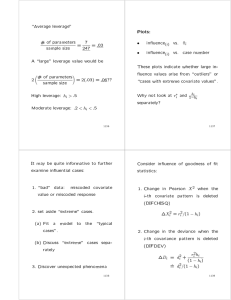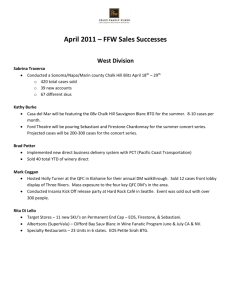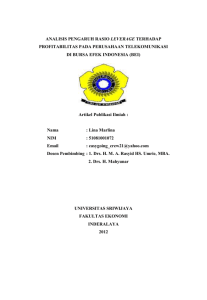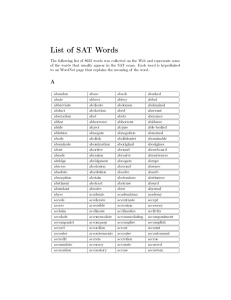Document 10714879
advertisement
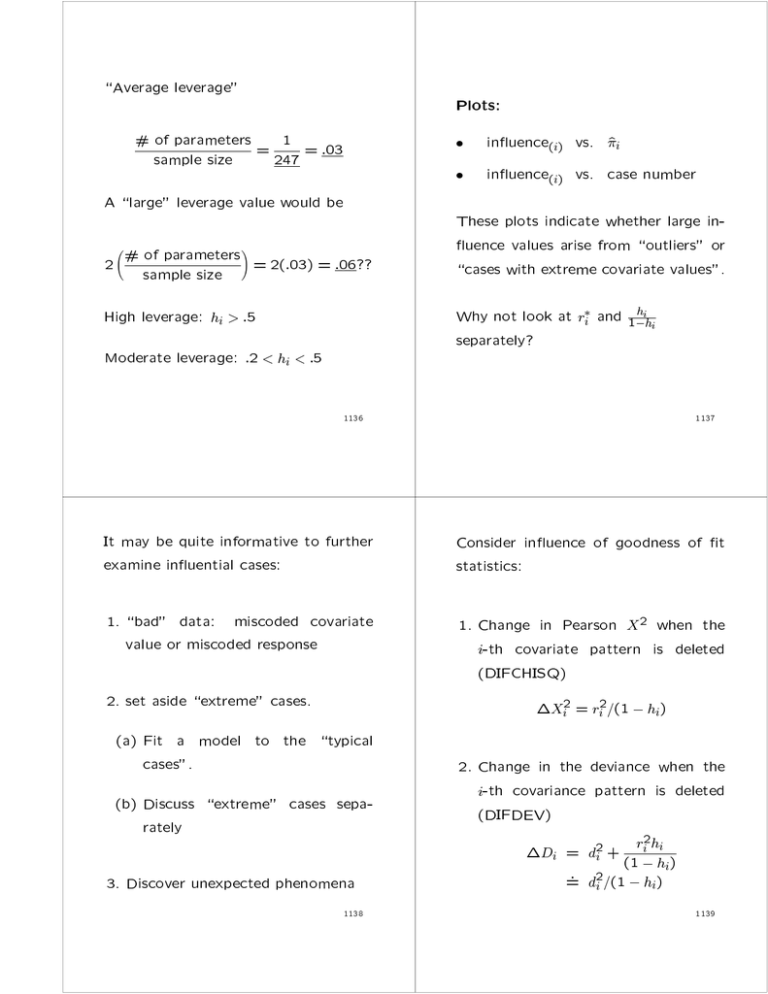
\Average leverage" Plots: # of parameters = 1 = :03 sample size 247 A \large" leverage value would be of parameters ! = 2(:03) = :06?? 2 # sample size High leverage: inuence(i) vs. ^i inuence(i) vs. case number These plots indicate whether large inuence values arise from \outliers" or \cases with extreme covariate values". Why not look at ri and 1;hihi separately? hi > :5 Moderate leverage: :2 < hi < :5 1136 1137 It may be quite informative to further examine inuential cases: Consider inuence of goodness of t statistics: 1. \bad" data: miscoded covariate value or miscoded response 1. Change in Pearson X 2 when the i-th covariate pattern is deleted (DIFCHISQ) 2. set aside \extreme" cases. Xi2 = ri2=(1 ; hi) (a) Fit a model to the \typical cases". (b) Discuss \extreme" cases separately 3. Discover unexpected phenomena 1138 2. Change in the deviance when the i-th covariance pattern is deleted (DIFDEV) 2 Di = d2i + (1r;i hhi ) i =: d2i =(1 ; hi) 1139 0 PROC LOGISTIC provides measures of inuence for individual parameters. 1 h C bari = ri2 @ i A 1 ; hi Xi2 = (C bari)( h1 ) 1. Delete the i-th covariance pattern i An \extreme" set of covariate values may have a strong \inuence" on only one, or two, or a few values for parameter estimates. 1140 Use an approximation ^ = (X 0V^ X );1xi(Yi ; ni^i)=(1 ; hi) (i) = 2 3 66 ^. 0(i) 77 64 . 7 ^ 5 k(i) Then, for the j -th coecient, ^ DFBETAj;(i) = S j;(i) ^j 1142 2. Compute ^j;all data ; ^j;i;th cov. pattern deleted S^ all data j; This requires too much computation. 1141
